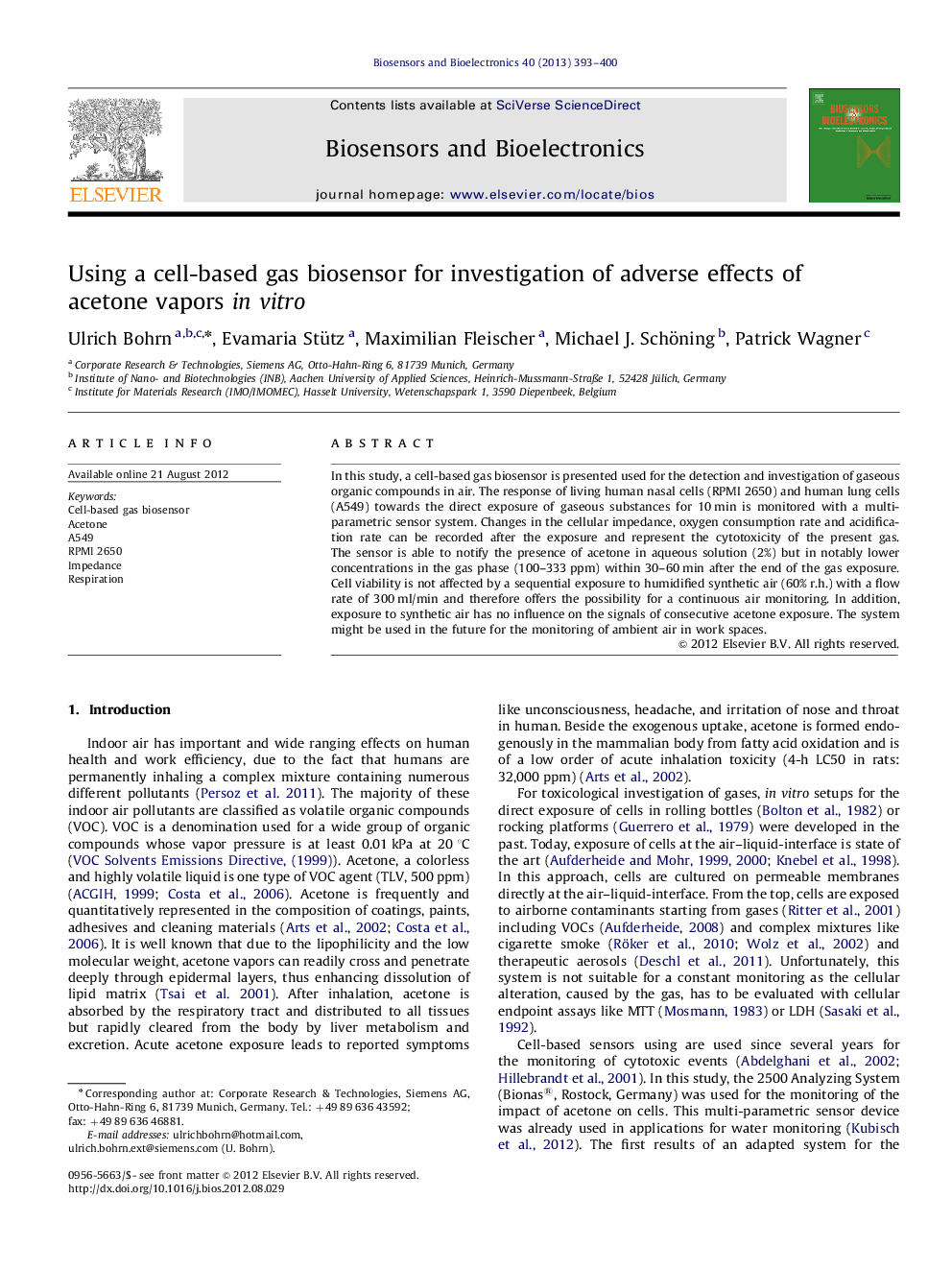| Article ID | Journal | Published Year | Pages | File Type |
|---|---|---|---|---|
| 7234787 | Biosensors and Bioelectronics | 2013 | 8 Pages |
Abstract
In this study, a cell-based gas biosensor is presented used for the detection and investigation of gaseous organic compounds in air. The response of living human nasal cells (RPMI 2650) and human lung cells (A549) towards the direct exposure of gaseous substances for 10Â min is monitored with a multi-parametric sensor system. Changes in the cellular impedance, oxygen consumption rate and acidification rate can be recorded after the exposure and represent the cytotoxicity of the present gas. The sensor is able to notify the presence of acetone in aqueous solution (2%) but in notably lower concentrations in the gas phase (100-333Â ppm) within 30-60Â min after the end of the gas exposure. Cell viability is not affected by a sequential exposure to humidified synthetic air (60%Â r.h.) with a flow rate of 300Â ml/min and therefore offers the possibility for a continuous air monitoring. In addition, exposure to synthetic air has no influence on the signals of consecutive acetone exposure. The system might be used in the future for the monitoring of ambient air in work spaces.
Related Topics
Physical Sciences and Engineering
Chemistry
Analytical Chemistry
Authors
Ulrich Bohrn, Evamaria Stütz, Maximilian Fleischer, Michael J. Schöning, Patrick Wagner,
